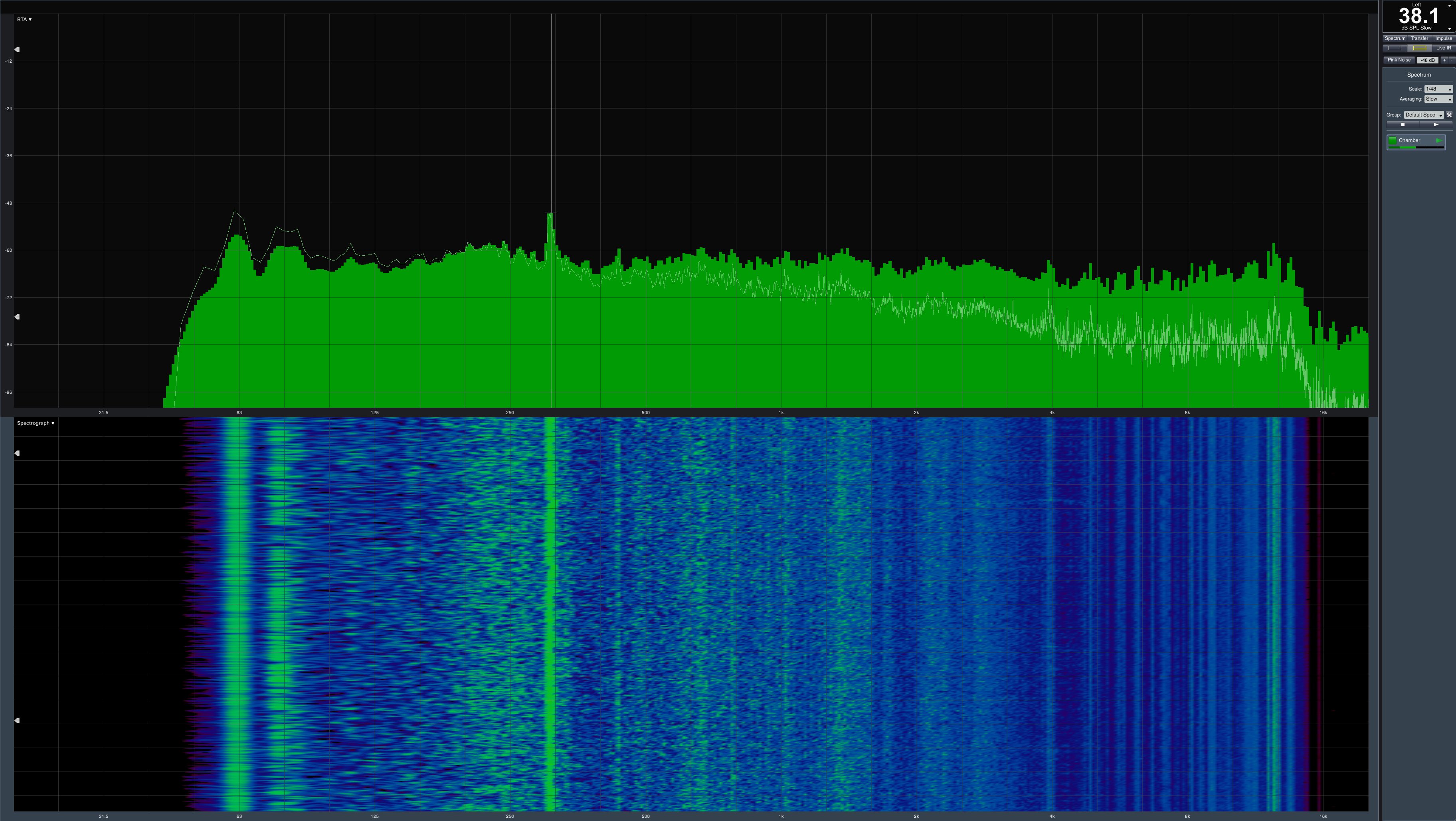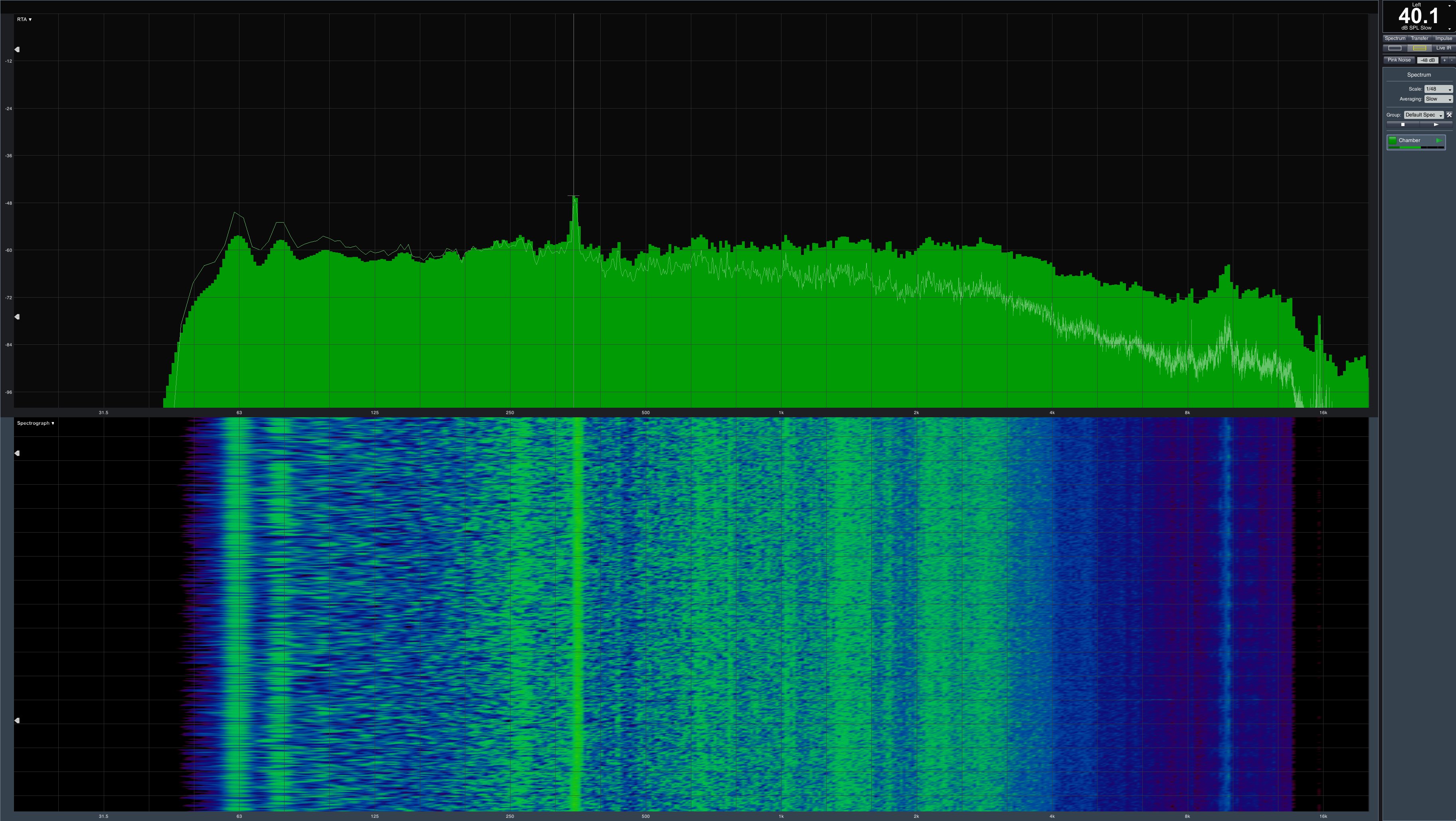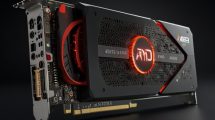The fan stop works and the fans start later with approx. 700 rpm (or just below). With more than 2000 rpm in a closed housing, you can still live, even if the cooling capacity reaches its limits. There is hardly any reserves to adjust the fan curve somewhat downwards, rather the opposite is the case. But then it will be loud, as we will see in a time.
Let's look at the measured values again as a tabular listing:
| XFX RX 590 Fatboy | |
|---|---|
| Fan speeds Open Benchtable Maximum | 1699 rpm (Gaming, Peak) |
| Fan speeds Open Benchtable Average | 1652 rpm (warmed up) |
| Fan Speeds Closed Case Maximum | 2028 rpm (Gaming, Peak) |
| Fan Speeds Closed Case Average | 1947rpm (warmed up) |
| Noise Emission (Air) Average | 41.4 dB(A), Closed Case (Peak) |
| Noise Emission (Air) Idle | Passive mode |
| Sound characteristic / hearing impression | rushing, bearing and engine noise, chirping |
| Coil-feathers/electric noises | audible coil fever |
Sound Spectrum
The measured 38.1 dB(A) is based on the measured 1700 rpm in the closed housing. We have applied the same gaming load to the open set-up in the measuring room, but the fans are limited to approx. set at a fixed position of 1700 rpm in order to be able to adjust this cooling situation exactly. Although the overall value is not so bad, the sound spectrum is interesting in several places. First, we see and hear engine and bearing noise from the fans and secondly, at the upper end of the spectrum, the chirping of the coils.
Since the stress test generates higher waste heat and higher temperatures, but the load remains more constant, we see in the torture loop a much stronger fan noise in the middle part of the spectrum, but also less zirp noise of the coils at the upper end. You can live with that, but it is and remains somewhat borderline.
- 1 - Einführung, Unboxing, Daten
- 2 - Teardown: Platinenanalyse und Kühler
- 3 - AotS: Escalation
- 4 - Battlefield 1
- 5 - Destiny 2
- 6 - Far Cry 5
- 7 - Ghost Recon Wildlands
- 8 - GTA V
- 9 - Metro Last Light Redux
- 10 - Wolfenstein 2
- 11 - Shadow of the Tomb Raider
- 12 - The Division
- 13 - The Witcher 3
- 14 - World of Warcraft
- 15 - Leistungsaufnahme im Detail
- 16 - Temperatur, Takt, Infrarot
- 17 - Lüfter und Lautstärke
- 18 - Zusammenfassung






































Kommentieren